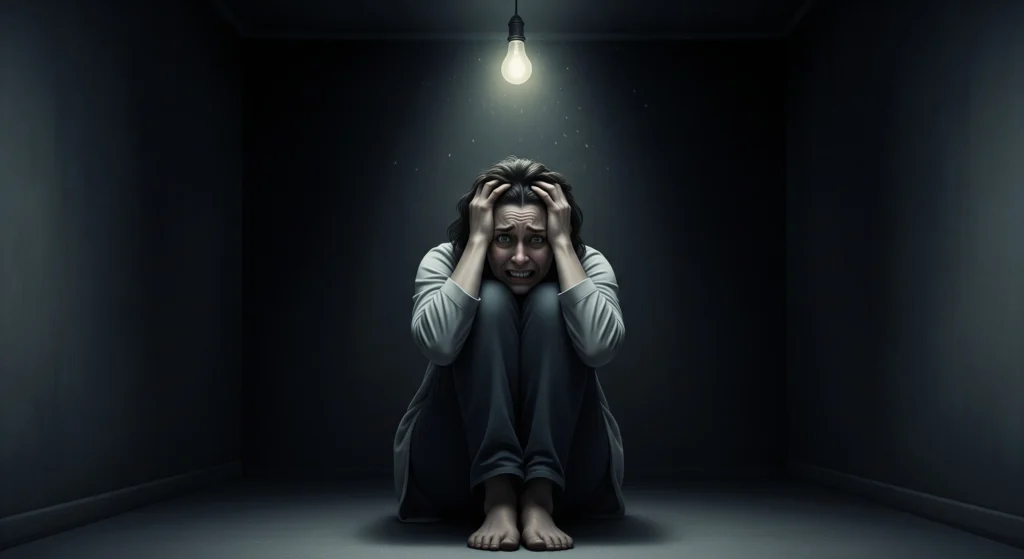If you’ve ever had a panic attack—the kind that feels like your brain suddenly hit the “emergency alarm” button for no reason—you’ve probably wondered: Can this ever fully go away? Millions of people ask the same thing, and the truth isn’t a simple yes or no. But here’s the good news: there is real hope. Once you understand what recovery actually looks like and which treatments genuinely help, you’ll feel way more in control of your mental health journey.

Understanding Panic Disorder
Panic disorder isn’t just “getting scared sometimes.” It’s when panic attacks show up out of nowhere—like your brain suddenly slamming the panic button even when nothing’s wrong. And because these attacks feel terrifying (think racing heart, shaky hands, “am I dying?” vibes), people start worrying about the next one. That fear alone can take over your life.
Some teens even start avoiding places where they’ve panicked before—like skipping the mall because “what if it happens again?” This can snowball into agoraphobia, which basically makes your world shrink. But here’s the important part: panic disorder isn’t a flaw or weakness. It’s rooted in biology, and once you understand that, getting the right help becomes a whole lot easier.
Defining Recovery: What Does “Cure” Really Mean?
Before we ask, “Can panic disorder be cured?” we have to know what cure even means. Doctors usually talk about remission—when your symptoms chill out or disappear for a while—versus a full-on cure, where the problem is gone for good.
Here’s the encouraging part: lots of people with panic disorder reach remission, sometimes completely. It depends on things like the type of treatment, whether agoraphobia is involved, and if other mental health issues are tagging along. For some, symptoms come and go, like annoying pop-up ads returning when life gets stressful.
But with the right help, most people get way better. Some even get back to living totally normal lives, even if tiny flickers of anxiety show up once in a while. The point is: improvement isn’t just possible—it’s actually really common.
Evidence-Based Treatment Options That Work
Cognitive Behavioral Therapy
CBT is basically the superhero of panic disorder treatment. It teaches you how your thoughts, feelings, and actions team up during a panic attack—kind of like noticing the plot twist in a scary movie before it freaks you out. One cool technique, interoceptive exposure, has you purposely bring on panic-like sensations in a safe way so your brain learns, “Oh… this isn’t actually dangerous.”
The results? Pretty amazing. Around 70–90% of people who stick with CBT feel way better, and many become totally panic-free in just a few months. Plus, the improvements tend to last. Boss level unlocked.
Medication Options
Some people also use medication to help calm the brain’s panic system. SSRIs and SNRIs are the go-to options, and about 61% of people become panic-free after a couple of months on them. They’re not instant, though—they take time to kick in.
Benzos work fast, but they can be habit-forming, so doctors usually keep them as a short-term backup, not the main event.
Combining Approaches for Optimal Results
For some teens, mixing therapy and medication works best—like combining headphones and noise cancellation for max peace. But it depends on the person. The key is working with a pro who helps you figure out what combo fits your life, your symptoms, and your goals.
What the Research Says
Long-term studies give us a pretty hopeful picture. In one huge 11-year study, almost 88% of people with panic disorder had zero panic attacks in the month they were checked—and about a third hit full, official remission. So no, panic disorder is not some life sentence.
But the details matter. People with panic disorder without agoraphobia tend to recover much more easily. One study showed 75% of them got better, while only 22% of those with agoraphobia did. It’s kind of like trying to heal while also being scared of leaving your house—it just makes everything harder.
Recovery also isn’t a straight line. Some people feel great for a while and then—bam—a relapse hits. Around 21–30% experience symptoms again after remission. That’s why long-term strategies matter: even when you feel better, you’ve still got to take care of your brain like you would any other part of your body.
Factors That Influence Recovery Success
Lots of things affect how well someone recovers from panic disorder, and knowing them helps set real expectations—not false “overnight cure” dreams.
Individual and Clinical Characteristics
Your age, how long you’ve had symptoms, and how intense they are all matter. People who’ve been struggling for years or who have super frequent panic attacks might need more time to get better. But don’t freak out—even severe cases can improve a ton with the right help.
Comorbid Conditions and Complications
When panic disorder teams up with other problems—like depression or substance use—it gets trickier to treat. For example, someone with both panic disorder and major depression is only about half as likely to recover as someone with panic disorder alone.
Agoraphobia is the toughest add-on because avoiding places becomes a habit that digs in deep. That’s why getting help early (before avoidance takes over) makes recovery way easier.
Treatment Adherence and Continuity
This one’s huge. The biggest predictor of recovery is honestly just showing up—sticking with therapy, taking meds as prescribed, and practicing the skills even when you feel better. Tons of people quit early because they think they’re cured, and then symptoms sneak back.
Finishing the full treatment plan is like finishing a full course of antibiotics—you do it so the problem doesn’t come back and bite you later.
Lifestyle Strategies That Support Recovery
Lots of things outside the doctor’s office can make a huge difference in calming panic disorder. Think of these as “background buffs” for your brain.
Physical Activity and Exercise
Moving your body is basically free anti-anxiety medicine. Walking, dancing, swimming—anything that gets your heart going—helps your brain chill out and makes scary sensations feel less… well, scary. Even 20–30 minutes a few times a week can help.
Sleep Hygiene and Rest
Sleep is your emotional battery. When it’s low, your brain freaks out way faster. A regular sleep schedule, less late-night scrolling, and a cozy sleep setup can seriously lower your anxiety levels. If sleep is a major struggle, CBT for insomnia can help too.
Stress Management Techniques
Stuff like deep breathing, meditation, yoga, and muscle relaxation are your “calm mode” tools. But they work best when you practice them often—not just during panic moments. Mindfulness especially teaches you to notice scary sensations without spiraling into “OMG, I’m dying.”
Dietary and Substance Considerations
Caffeine can make your body feel like it’s having a panic attack even when you’re actually fine, so keeping it low helps. Alcohol might feel calming at first, but it ends up making panic way worse. Eating regularly, staying hydrated, and keeping your blood sugar steady also stop those “uh-oh, why do I feel weird?” moments before they start.
Building a Support System for Long-Term Success
You don’t have to do this solo — recovery usually works best with other people in your corner.
Professional Support Networks
Therapists and anxiety specialists are like coaches who teach you real skills, track progress, and tweak your game plan. Regular sessions — and sometimes booster check-ins after you’re doing better — keep you on track.
Family and Friend Involvement
When people close to you actually understand panic disorder, they become helpers instead of accidental saboteurs. They can calm you without enabling avoidance and spot warning signs if things slide back.
Peer Support
Support groups (in-person or online) are where you meet people who get it — the awkward, embarrassing, and triumphant parts. Hearing other folks’ recovery stories is surprisingly powerful: it’s proof that you can get through this, too.
Preventing Relapse
Getting better is awesome — but staying better takes steady effort and awareness.
Recognizing Early Warning Signs
Your brain usually gives a few hints before things slide back. Maybe you start worrying more about panic returning, or you avoid places you were fine with before. Keeping track of patterns (like in a notes app or journal) helps you catch trouble early, before it turns into a full setback.
Continuing Treatment and Skills Practice
Don’t dip out of therapy or meds the second you feel better — that’s like quitting antibiotics halfway through. Most people need at least 6–12 months of consistent treatment to keep progress solid. And those CBT skills? They’re daily-life tools, not fire extinguishers. Use them often.
Managing Stress and Life Transitions
Big changes — moving, breakups, school pressure — can stir things up, even the good changes. That’s when extra self-care and maybe a temporary tune-up with your therapist help the most. Staying aware and asking for help early keeps small bumps from becoming big crashes.
The Reality of Living Well With Panic Disorder
So, can panic disorder be cured? The honest answer: sometimes yes, sometimes not 100% — but almost everyone can get so much better that panic stops running their life. Many people become completely symptom-free, and others only get tiny flickers of anxiety that don’t control anything anymore. Both are huge wins.
The magic combo is getting real treatment, sticking with it, and taking care of yourself along the way. Panic disorder is actually one of the most treatable anxiety problems — the success rates are seriously hopeful, not depressing.




GIPHY App Key not set. Please check settings